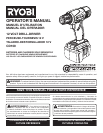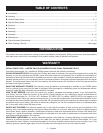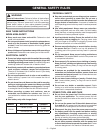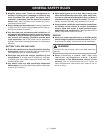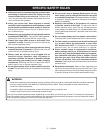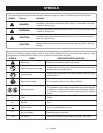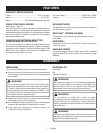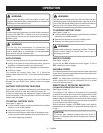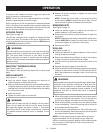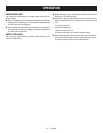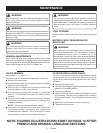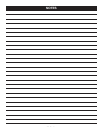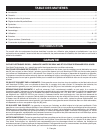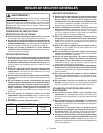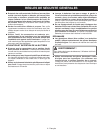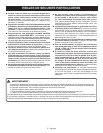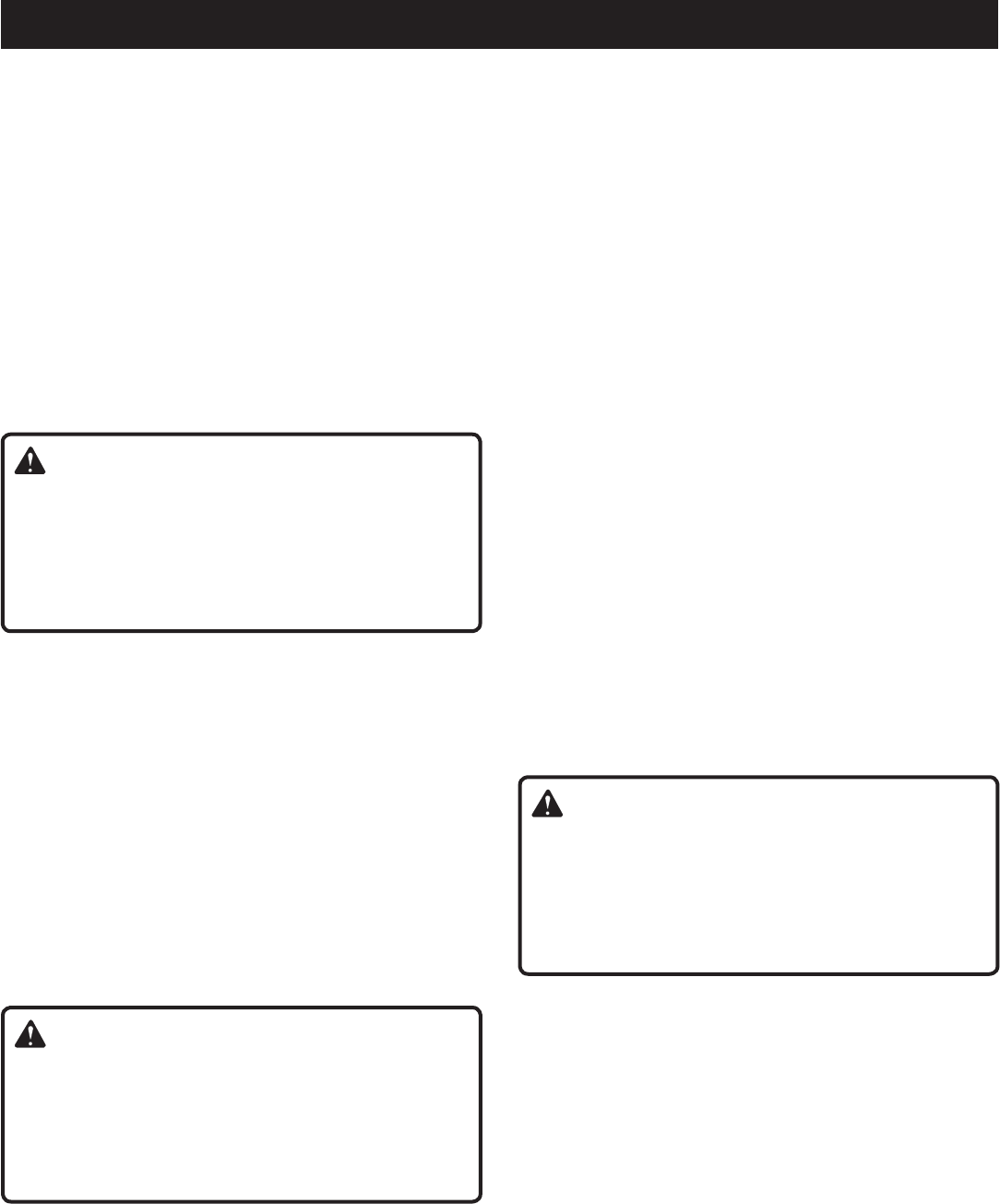
9 — English
Rotate the chuck clockwise to tighten the chuck jaws
securely on the bit.
NOTE: Rotate the chuck body in the direction of the
arrow marked LOCK to tighten the chuck jaws. Do not
use a wrench to tighten or loosen the chuck jaws.
REMOVING BITS
See Figure 6, page 13.
Lock the switch trigger by placing the direction of
rotation selector in the center position.
Rotate the chuck sleeve counter clockwise to open the
chuck jaws.
NOTE: Rotate the chuck body in the direction of the arrow
marked UNLOCK to loosen the chuck jaws. Do not use
a wrench to tighten or loosen the chuck jaws.
Remove the drill bit.
DRILLING
See Figure 8, page 13.
Check the direction of rotation selector for the correct
setting (forward or reverse).
Secure the material to be drilled in a vise or with clamps
to keep it from turning as the drill bit rotates.
Hold the drill firmly and place the bit at the point to be
drilled.
Depress the switch trigger to start the drill.
Move the drill bit into the workpiece, applying only enough
pressure to keep the bit cutting. Do not force the drill or
apply side pressure to elongate a hole. Let the tool do
the work.
WARNING:
Be prepared for binding at bit breakthrough. When these
situations occur, drill has a tendency to grab and kick
opposite to the direction of rotation and could cause
loss of control when breaking through material. If not
prepared, this loss of control can result in possible
serious injury.
When drilling hard, smooth surfaces, use a center punch
to mark the desired hole location. This will prevent the
drill bit from slipping off-center as the hole is started.
When drilling metals, use a light oil on the drill bit to keep
it from overheating. The oil will prolong the life of the bit
and increase the drilling action.
If the bit jams in the workpiece or if the drill stalls, stop
the tool immediately. Remove the bit from the workpiece
and determine the reason for jamming.
NOTE: This drill has an electric brake. When the switch
trigger is released, the chuck stops turning. When the
brake is functioning properly, sparks will be visible through
the vent slots on the housing. This is normal and is the
action of the brake.
OPERATION
To stop the drill, release the switch trigger and allow the
chuck to come to a complete stop.
NOTE: The drill will not run unless the direction of rotation
selector is pushed fully to the left or right.
Avoid running the drill at low speeds for extended periods
of time. Running at low speeds under constant usage may
cause the drill to become overheated. If this occurs, cool the
drill by running it without a load and at full speed.
KEYLESS CHUCK
See Figure 4, page 12.
The drill has a keyless chuck to tighten or release drill bits
in the chuck jaws. The arrows on the chuck indicate which
direction to rotate the chuck body in order to LOCK (tighten)
or UNLOCK (release) the drill bit.
WARNING:
Do not hold the chuck body with one hand and use the
power of the drill to tighten the chuck jaws on the drill
bit. The chuck body could slip in your hand, or your
hand could slip and come in contact with the rotating
drill bit. This could cause an accident resulting in serious
personal injury.
MAG TRAY
™
(SCREW HOLDER)
See Figure 5, page 12.
The magnetic tray conveniently stores bits or other small
parts.
INSTALLING BITS
See Figures 6 - 7, page 13.
Lock the switch trigger by placing the direction of
rotation selector in the center position.
Open or close the chuck jaws to a point where the opening
is slightly larger than the bit size you intend to use. Also,
raise the front of the drill slightly to keep the bit from falling
out of the chuck jaws.
Insert the drill bit.
Tighten the chuck jaws on the drill bit.
WARNING:
Make sure to insert the drill bit straight into the chuck
jaws. Do not insert the drill bit into the chuck jaws at
an angle then tighten, as shown in figure 7. This could
cause the drill bit to be thrown from the drill, resulting
in possible serious personal injury or damage to the
chuck.



